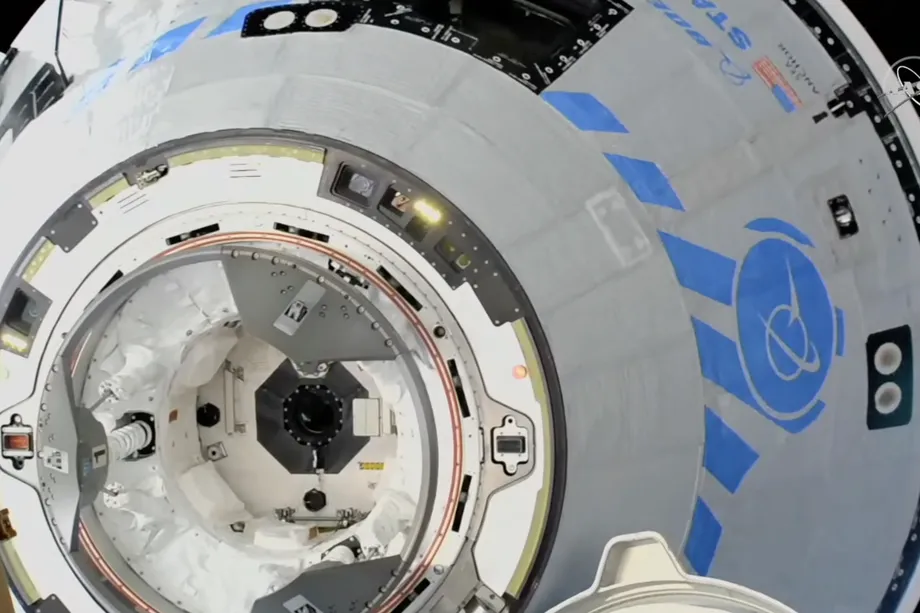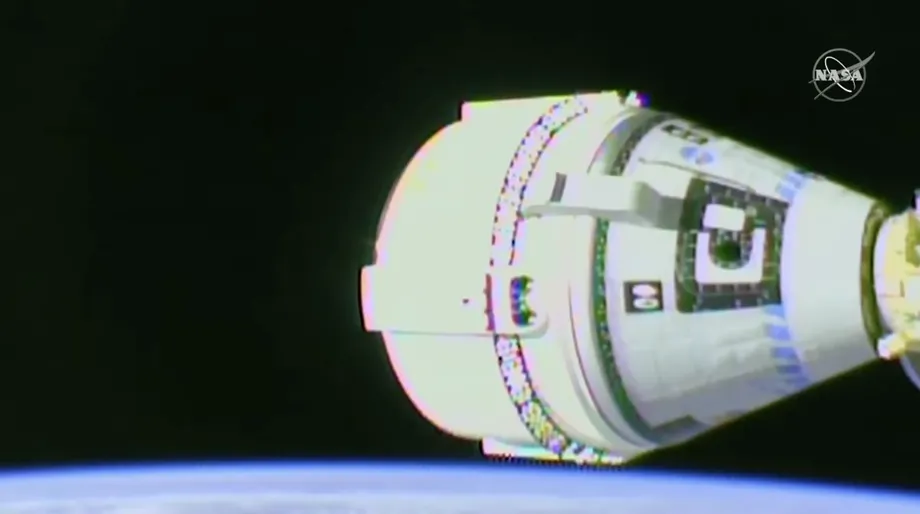Tonight, Boeing's manned spacecraft CST-100 starliner successfully docked with the International Space Station -- indicating that the aircraft may bring humans to the international space station in the future This proved a key capability. After years of delay and failure, starliner was finally verified in space.

Starliner is conducting a key test flight for NASA, called oft-2, or orbital flight test-2. The capsule, developed by Boeing for NASA's commercial crew program, is used to transport NASA astronauts to and from the space station. But before anyone is brought into space by it, NASA requires Boeing to conduct an unmanned flight demonstration of the starliner to show that the capsule can achieve all the major milestones it needs to achieve when carrying passengers.
Boeing has been trying to demonstrate starliner's capabilities until now. The mission is called oft-2 because it is technically a remake of the oft mission Boeing tried in 2019. During that flight, starliner was launched into space as planned, but a software failure prevented the capsule from entering the correct orbit it needed to reach to rendezvous with the international space station. Boeing had to bring the aircraft home in advance, and starliner lost the opportunity to dock with the international space station.
Now, about two and a half years later, "starliner" finally shows what it is designed to do. Using a series of sensors, the capsule independently guides itself into an open docking port on the international space station. "Boeing's communications representative Steve siceloff said in the live broadcast of the docking:" the Boeing star spacecraft has completed its historic first docking with the international space station, opening up a new way for the crew to enter the orbital laboratory. The docking time was more than an hour later than planned, because there were some problems in starliner's graphics and docking ring, which were solved before docking. "

After Boeing disclosed some problems with the capsule thruster yesterday, people were worried about the ability of starliner to dock with the space station. At 6:54 EDT, "starliner" was successfully launched into space on the Atlas V rocket built and operated by the joint launch alliance. Once the starliner rocket reaches its proper orbit, it must be inserted into the space station starliner. After the operation began, Boeing and NASA revealed that two of the 12 thrusters used by starliner for the program failed and were cut off prematurely. However, the capsule's flight control system can start and divert to an effective propeller, which helps put the starliner into a stable orbit.
In the end, NASA and Boeing claimed that the problem would not affect starliner's other missions. "There's really no need to solve them," Steve stich, project manager of NASA's commercial crew program, said at a post flight press conference. "But I know what the team will do. Our usual practice is that we will look at the data and try to understand what happened." Today, Boeing revealed that the pressure drop in the cabin led to the early cut-off of the propeller, but the system performed normally in the subsequent combustion of the propeller. According to Boeing, the problem "does not pose a risk to the rest of the flight test" because there are redundant devices on the spacecraft.
Boeing also pointed out today that the starliner team is investigating some strange behaviors of the "thermal cooling circuit", but said the temperature on the spacecraft is very stable.
Now, with the docking of starliner with the space station, the spacecraft will spend the next 4-5 days on the space station. Tomorrow morning, the astronauts on the international space station will open the cabin door of the spacecraft and retrieve some of the goods loaded inside. Starliner also has a human model called "rocket man Rossi", which simulates the scene of human riding on the aircraft.
After a short stay at the international space station, starliner will separate from the international space station and keep a distance from the station in order to return home. The capsule will use its thrusters to take itself out of orbit and put it into Earth's orbit. The two failed thrusters were also the kind used for the derailment maneuver, but NASA and Boeing didn't seem to be worried. "We just need to see if we can restore the thrusters," stich said. He also pointed out that the thrusters at work can be used, and Boeing can choose to use different thrusters to perform tasks if necessary. So there's a lot of redundancy in the spacecraft.
Now, the starliner team is celebrating their major milestones. "Today is a great milestone. It provides more business opportunities to enter low earth orbit, maintains the international space station, and enables NASA to achieve the goal of sending humans back to the moon and eventually to Mars. The great achievements of human space flight will be remembered by history for a long time. Today is no exception," NASA astronaut Bob Heins said after docking.